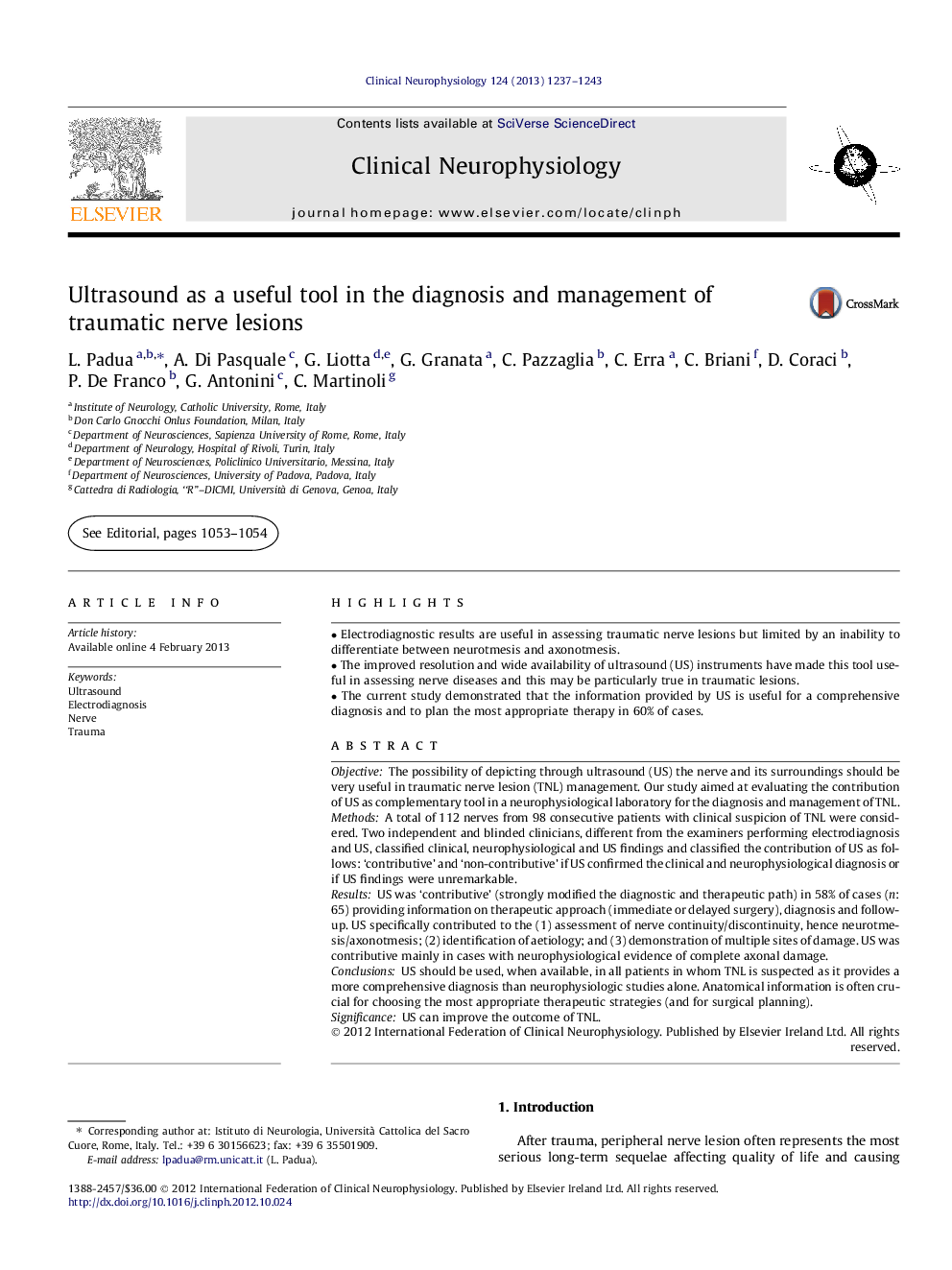| Article ID | Journal | Published Year | Pages | File Type |
|---|---|---|---|---|
| 3043880 | Clinical Neurophysiology | 2013 | 7 Pages |
ObjectiveThe possibility of depicting through ultrasound (US) the nerve and its surroundings should be very useful in traumatic nerve lesion (TNL) management. Our study aimed at evaluating the contribution of US as complementary tool in a neurophysiological laboratory for the diagnosis and management of TNL.MethodsA total of 112 nerves from 98 consecutive patients with clinical suspicion of TNL were considered. Two independent and blinded clinicians, different from the examiners performing electrodiagnosis and US, classified clinical, neurophysiological and US findings and classified the contribution of US as follows: ‘contributive’ and ‘non-contributive’ if US confirmed the clinical and neurophysiological diagnosis or if US findings were unremarkable.ResultsUS was ‘contributive’ (strongly modified the diagnostic and therapeutic path) in 58% of cases (n: 65) providing information on therapeutic approach (immediate or delayed surgery), diagnosis and follow-up. US specifically contributed to the (1) assessment of nerve continuity/discontinuity, hence neurotmesis/axonotmesis; (2) identification of aetiology; and (3) demonstration of multiple sites of damage. US was contributive mainly in cases with neurophysiological evidence of complete axonal damage.ConclusionsUS should be used, when available, in all patients in whom TNL is suspected as it provides a more comprehensive diagnosis than neurophysiologic studies alone. Anatomical information is often crucial for choosing the most appropriate therapeutic strategies (and for surgical planning).SignificanceUS can improve the outcome of TNL.
► Electrodiagnostic results are useful in assessing traumatic nerve lesions but limited by an inability to differentiate between neurotmesis and axonotmesis. ► The improved resolution and wide availability of ultrasound (US) instruments have made this tool useful in assessing nerve diseases and this may be particularly true in traumatic lesions. ► The current study demonstrated that the information provided by US is useful for a comprehensive diagnosis and to plan the most appropriate therapy in 60% of cases.
